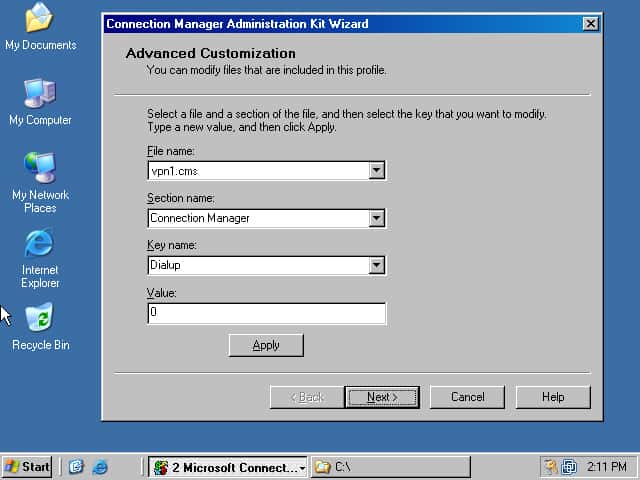Microsoft Connection Manager (CM) was a client dialer application designed to simplify connecting to network resources over public and private networks. Primarily used in earlier versions of Windows, it provided an easy interface for accessing the Internet or corporate networks.
This article explores the intricacies of Microsoft Connection Manager, detailing its features, historical significance, and impact on network connectivity.
In this article:
- What was Microsoft Connection Manager?
- Features of Microsoft Connection Manager
- Integration with Network Protocols
- Historical Context and Evolution
- Impact and Legacy in Networking
- References

1. What was Microsoft Connection Manager?
Microsoft Connection Manager was a client dialer software, pivotal for connecting to networks through public or private connections. It streamlined network access for Windows users, offering an intuitive interface for internet connectivity and secure corporate network access.
Versions and Compatibility
Connection Manager was available for Windows 95, 98, NT, and 2000. Its compatibility spanned these versions, ensuring users across different Windows platforms could leverage its functionalities.
2. Features of Microsoft Connection Manager
Wizard-based Administration
The software featured a wizard-based setup, guiding users through connection configuration with ease. This approach simplified network settings, making it accessible for both novice and experienced users.
POP and RAS Phone Books
Connection Manager included phone books for Points of Presence (POPs) and Remote Access Services (RAS), enabling users to store and manage multiple network access points and dial-up connections efficiently.
Automatic Disconnect and Redial
The software could automatically disconnect and redial connections, optimizing connectivity and ensuring uninterrupted network access, especially crucial for dial-up connections.
Custom Service Profiles
Users could create multiple service profiles, customizing connections based on specific needs. This flexibility allowed for tailored networking experiences, catering to diverse requirements.
3. Integration with Network Protocols
Support for PPTP
Connection Manager supported Point-to-Point Tunneling Protocol (PPTP), facilitating secure and encrypted connections, particularly vital for accessing corporate networks over the internet.
Connectivity to ISPs and Corporate Networks
It enabled seamless connectivity to Internet Service Providers (ISPs) and corporate networks, making it a versatile tool for diverse networking environments. This integration was key in providing transparent and secure access to network resources.
These chapters outline the core aspects of Microsoft Connection Manager, highlighting its functionality, features, and integration with network protocols, offering a detailed perspective for those interested in this legacy Microsoft technology.
4. Historical Context and Evolution
Development Timeline
Microsoft Connection Manager emerged in the mid-90s, aligning with the rise of internet connectivity and Windows 95. Its development paralleled the evolution of network technologies, adapting to the needs of expanding internet and corporate network users.
Transition to Modern Networking Solutions
As networking technologies evolved, Microsoft phased out Connection Manager. The rise of broadband and more advanced networking solutions reduced the reliance on dial-up-based tools, leading to the integration of more sophisticated network management tools in later Windows versions.
5. Impact and Legacy in Networking
Role in Early Internet Access
Connection Manager played a crucial role in democratizing internet access. It provided an easy-to-use interface for connecting to the Internet and corporate networks, especially important during the dial-up era.
Legacy in Windows Networking
Its legacy endures as a symbol of early network connectivity solutions in Windows. Connection Manager laid the groundwork for future networking features in Windows, influencing the design of more advanced network management tools.
6. References
- “Microsoft Windows Networking Essentials” by Darril Gibson.
- Several of Microsoft’s official documentation and support articles related to Connection Manager were consulted.
